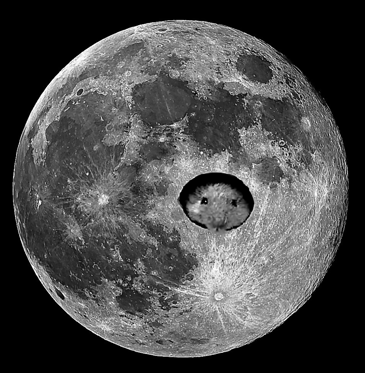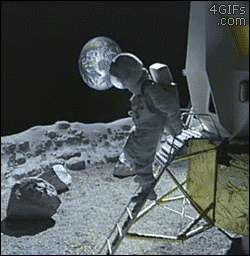
Posted on 10/03/2015 7:42:02 PM PDT by ETL
NASA’s New Horizons spacecraft has sent incredible images of Pluto’s largest moon Charon back to Earth.
The latest images reveal the moon’s complex and violent history, according to NASA. “Many New Horizons scientists expected Charon to be a monotonous, crater-battered world; instead, they’re finding a landscape covered with mountains, canyons, landslides, surface-color variations and more,” explained the space agency, in a statement.
The high-resolution images, which were taken on July 14 and transmitted to Earth on Sept. 21, reveal a belt of fractures and canyons just north of the moon’s equator. Four times as long as the Grand Canyon, and twice as deep in places, the faults and canyons indicate a titanic geological upheaval in Charon’s past, according to NASA.
(Excerpt) Read more at foxnews.com ...
Wait, don’t you have to be a planet to have a moon?
Neither does our own Moon slightly before and slightly after being a Full Moon.
It's called "gibbous." Caused by the body casting a shadow upon itself. Ever notice?
Regards,
You know, I think you might be right on that. I didn’t look carefully enough at it earlier to notice the shadow along the right edge. I just assumed, that it didn’t have enough mass or gravity to make it more rounded. But even Earth isn’t perfectly round.
______________________________
“The shape of Earth approximates an oblate spheroid, a sphere flattened along the axis from pole to pole such that there is a bulge around the equator.[95] This bulge results from the rotation of Earth, and causes the diameter at the equator to be 43 kilometres (27 miles) larger than the pole-to-pole diameter.[96] Thus the point on the surface farthest from Earth’s center of mass is the summit of the equatorial Chimborazo volcano in Ecuador. [94][97][98][99]
The average diameter of the reference spheroid is about 12,742 kilometres (7,918 miles), which is approximately 40,000 km/pi, because the meter was originally defined as 1/10,000,000 of the distance from the equator to the North Pole through Paris, France.[100]
Local topography deviates from this idealized spheroid, although on a global scale these deviations are small compared to Earth’s radius”
https://en.wikipedia.org/wiki/Earth#Shape
______________________________
“Because of the combined effects of gravitation and rotation, the Earth’s shape is roughly that of a sphere slightly flattened in the direction of its axis. For that reason, in cartography the Earth is often approximated by an oblate spheroid instead of a sphere. The current World Geodetic System model uses a spheroid whose radius is 6,378.137 km [3,963.2 miles] at the equator and 6,356.752 km [3,950 miles] at the poles.”
https://en.wikipedia.org/wiki/Spheroid
They are not physically distinct from the dwarf planets, but are not dwarf planets because they do not directly orbit the Sun. The seven that are more massive than Eris are the Moon, the four Galilean moons of Jupiter (Io, Europa, Ganymede, and Callisto), one moon of Saturn (Titan), and one moon of Neptune (Triton).
The others are six moons of Saturn (Mimas, Enceladus, Tethys, Dione, Rhea, and Iapetus), five moons of Uranus (Miranda, Ariel, Umbriel, Titania, and Oberon), and one moon of Pluto (Charon).”
https://en.wikipedia.org/wiki/Dwarf_planet#Planetary-mass_moons

Our moon, as you may know, is believed by many in the field to be a ‘chip off the old rock’. ie, once a piece of the Earth.
_________________________________
“Origin of the Moon refers to any of the various explanations for the formation of the Moon, Earth’s natural satellite. The leading theory has been the giant impact hypothesis.[1][2]
However, research continues on this matter, and there are a number of variations and alternatives.[1]
Other proposed scenarios include captured body, fission, formed together (condensation theory), planetesimal collisions (formed from asteroid-like bodies), and collision theories.[3]
The standard GIH (Giant Impact Hypothesis) suggests a Mars-sized body called Theia impacted Earth, creating a large debris ring around the Earth which then formed the system.[1]
However, the Moon’s oxygen isotopic ratios seem to be essentially identical to Earth’s.[4] Oxygen isotopic ratios, which may be measured very precisely, yield a unique and distinct signature for each solar system body.[5]
If Theia had been a separate protoplanet, it probably would have had a different oxygen isotopic signature from Earth, as would the ejected mixed material.[6] Also, the Moon’s titanium isotope ratio (50Ti/47Ti) appears so close to the Earth’s (within 4 ppm), that little if any of the colliding body’s mass could likely have been part of the Moon.[7][8]”
https://en.wikipedia.org/wiki/Origin_of_the_Moon
still looks pretty dry, colorless and boring to me.

make = made
Lol! That’s great. A bit revolting, but great.

A Plutonian victory lap is mighty long timewise. None of us will live even 1 Plutonian year which is just shy of 248 earth years.
Sheet!... I left the keys in my other suit!
LOL!
According to that, a “Pluto year-ago” was the Earth year 1767! The year of the Stamp Act.
http://www.u-s-history.com/pages/h643.html
Nice rimshot!
How do we know this picture wasn’t taken by Stanley Kubrick on a London filmstage in the late 60s? I don’t see any stars.
I thought we aren’t supposed to use the word ‘dwarf’?
the man that made the word “is” famous.
I see them....
Disclaimer: Opinions posted on Free Republic are those of the individual posters and do not necessarily represent the opinion of Free Republic or its management. All materials posted herein are protected by copyright law and the exemption for fair use of copyrighted works.